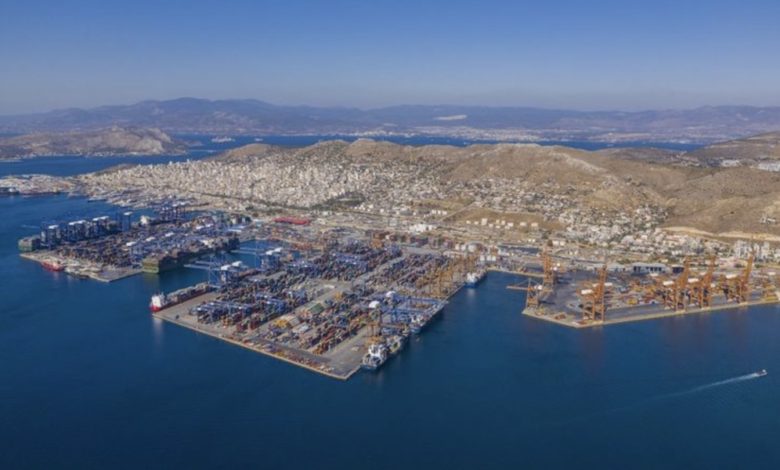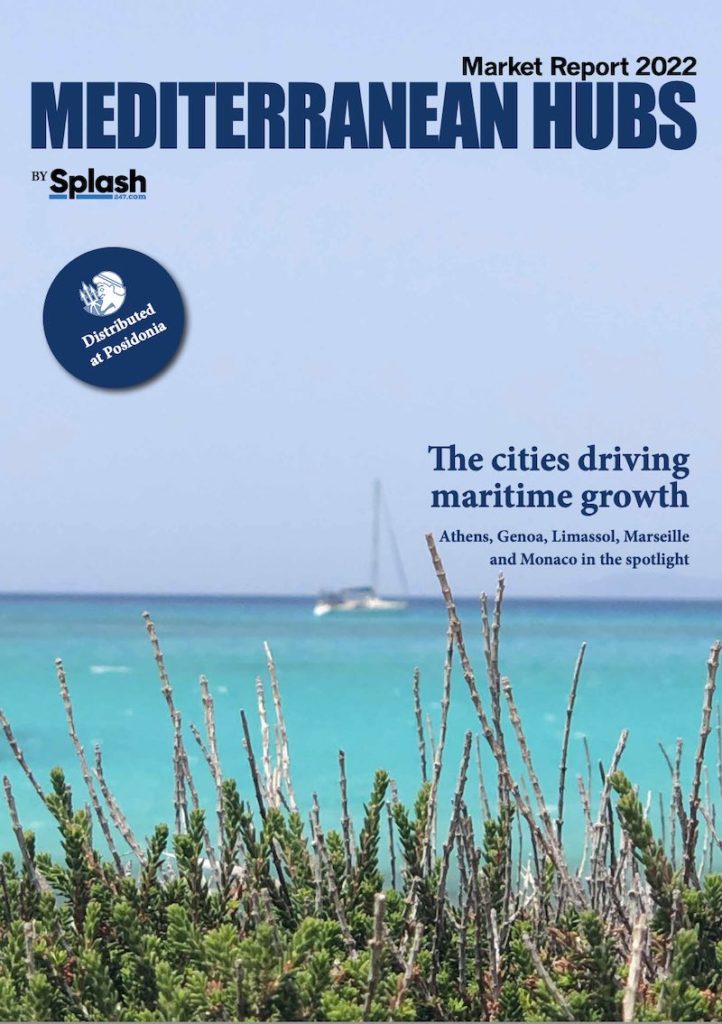Piraeus in the spotlight

Under the control of Cosco since 2009, Piraeus has become the Mediterranean’s top port. As part of Splash’s new Mediterranean Hubs report, the port is profiled today.
Situated on the Saronic Gulf on the western coasts of the Aegean Sea, a strategic jewel for nearly 2,500 years the Port of Piraeus is the largest port in Greece as well as one of the largest in Europe.
Also called the port of three continents, Piraeus sits at the crossroads of Europe, Asia and Africa, being the natural port of Athens and Greece’s main gateway and one of the busiest ports in the Mediterranean. It is the first European westbound port after crossing the Suez Canal with the suitable infrastructure to serve international trade and landside transportation.
Piraeus is one of the oldest seaports in the Mediterranean. It reached the pinnacle of its glory in the fifth century BC as the port of the city of Athens and was the commercial centre of the then-known world. Today, it is the leading port in Europe in terms of passenger traffic, but also the main port connecting most islands with the mainland.
Piraeus sits at the crossroads of Europe, Asia and Africa
“Owing to the geography of Greece with hundreds of islands, Piraeus is a major ferry market and is quickly becoming a favorable cruise port too with berthing being possible in the port because of its depth. Also recently reopening yards with the support of the current government,” remarks Marina Tzoutzouraki, CFO and co-founder of eShipfinance.com.
Piraeus has become a major transhipment hub for goods destined for Mediterranean and Black Sea ports since China’s Cosco took over its container operations in 2009 and upgraded its infrastructure.
Cosco acquired the majority of Piraeus Port Authority (PPA) shares in 2016 after an international tender, and the Port of Piraeus has since become one of the most critical links in Beijing’s landmark Belt and Road Initiative – also known as the New Silk Road – that connects Asia, Africa, and Europe.
In just a few years, the port has grown to be one of the fastest-growing in the world as well as the leading port in the Mediterranean in terms of container transport. Today it is switching places with Spain’s Valencia port as the top Mediterranean port in terms of teu handling. Meanwhile, it is one of the largest ports in Europe with integrated business encompassing many activities such as the cruise terminal, ferry terminal and car terminal business, all of which contribute significantly to the local economy and industry.
As of 2021, Cosco has made investments exceeding €1bn, including €600m for the construction of Pier 2 and Pier 3, leading to an impressive capacity increase reaching annual container handling of well over 7.2m teu. The ultimate goal is to reach a container throughput of 10m teu so as to become the largest and most efficient logistics hub in Central and Eastern Europe.
Activities of the PPA continue on an upward trend in all segments. The company, founded in 1930, last year recorded its highest ever profit of around $40m with an annual turnover of close to $170m. Further investments are planned as part of the Cosco privatisation deal, including the expansion of an existing cruise terminal. The scheme still needs to be approved as Greece’s top administrative court in March ruled that approval by the authorities was deficient and had to be amended.
Across the Mediterranean maritime hubs are developing, offering a full range of services and establishing themselves at shipping’s top table. Splash identified the five leading maritime capitals in the region – Athens, Genoa Limassol, Marseille and Monaco – and assigned correspondents to report on their individual strengths for a special glossy magazine. Splash readers can access the full magazine online by clicking here.

